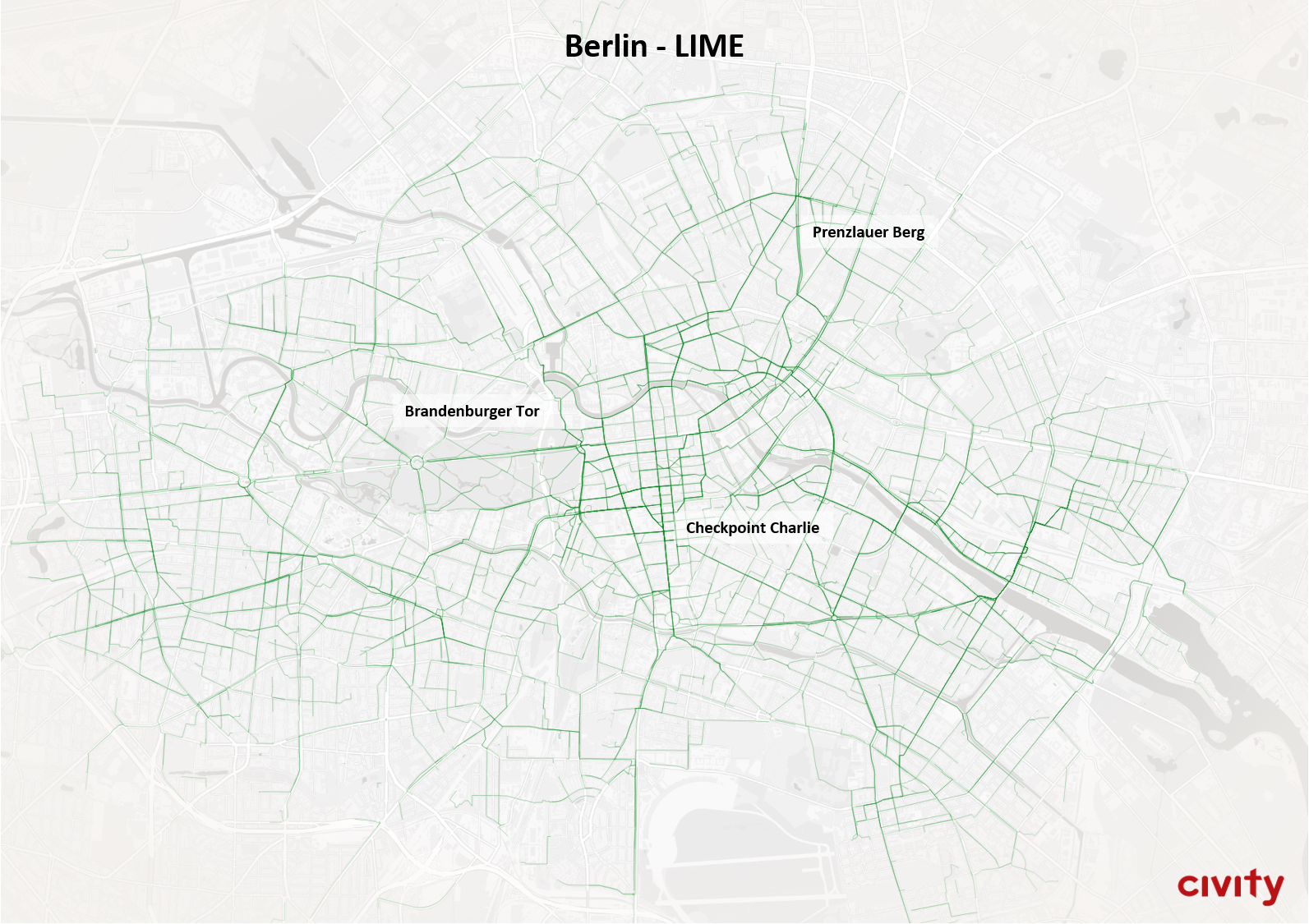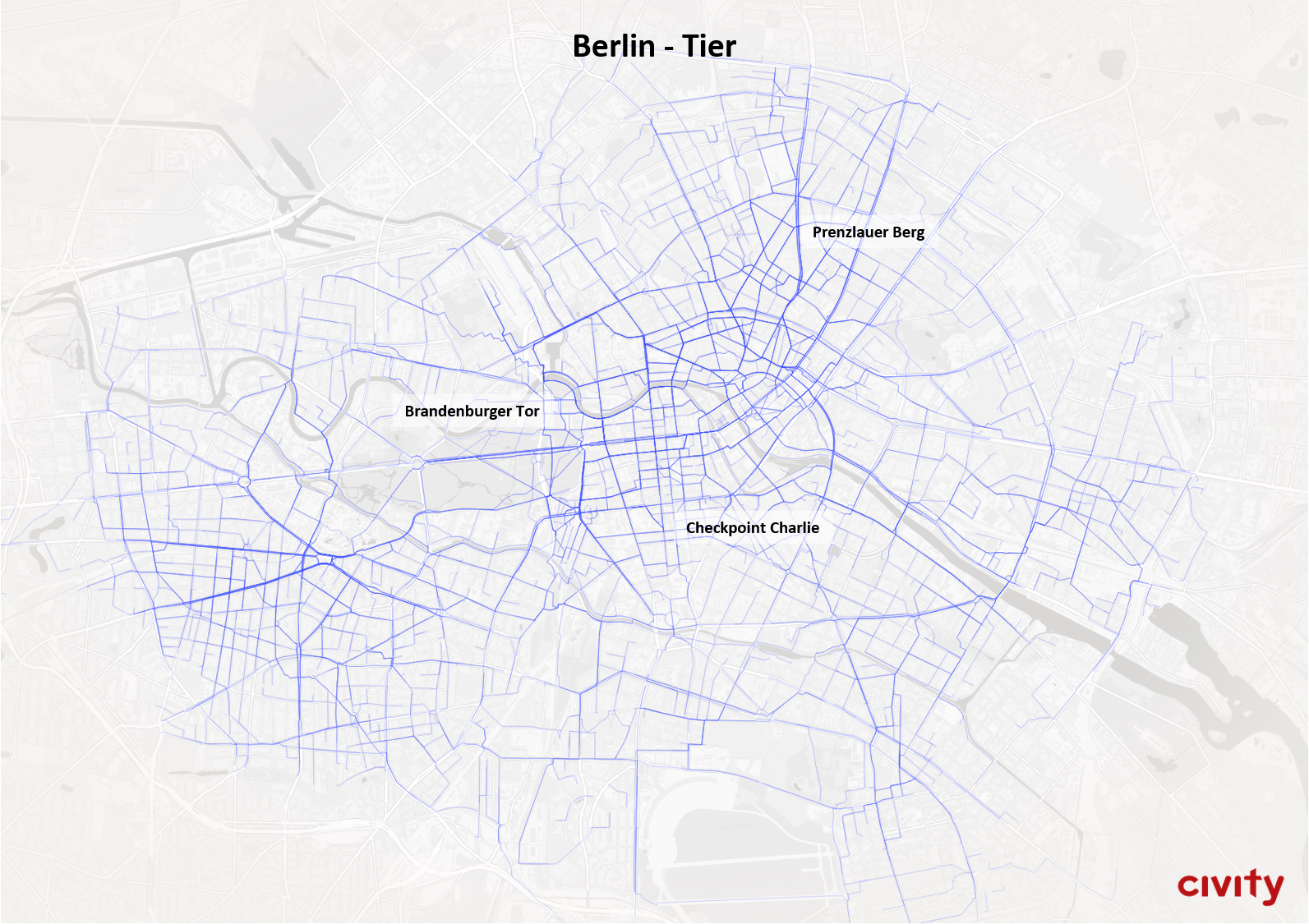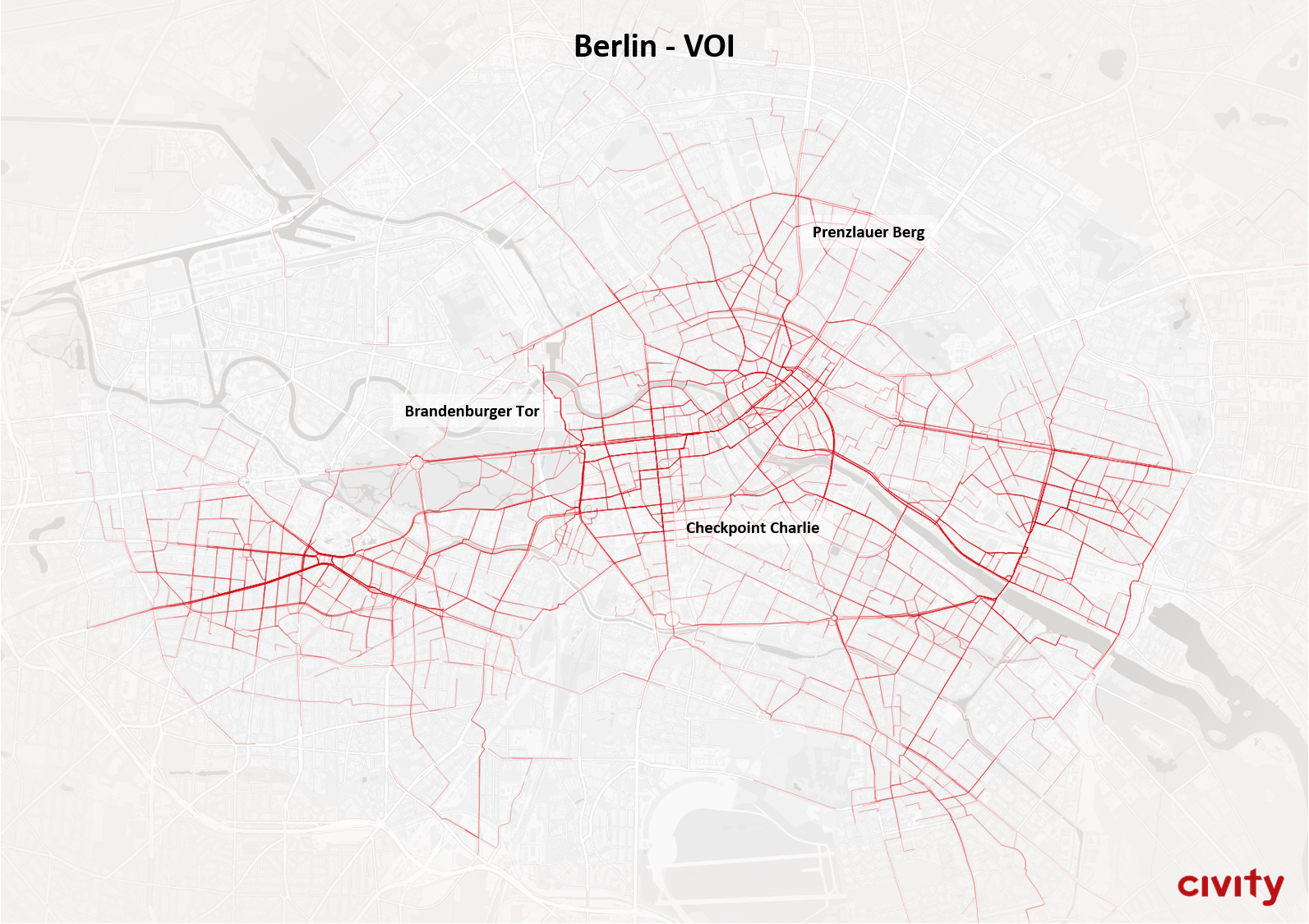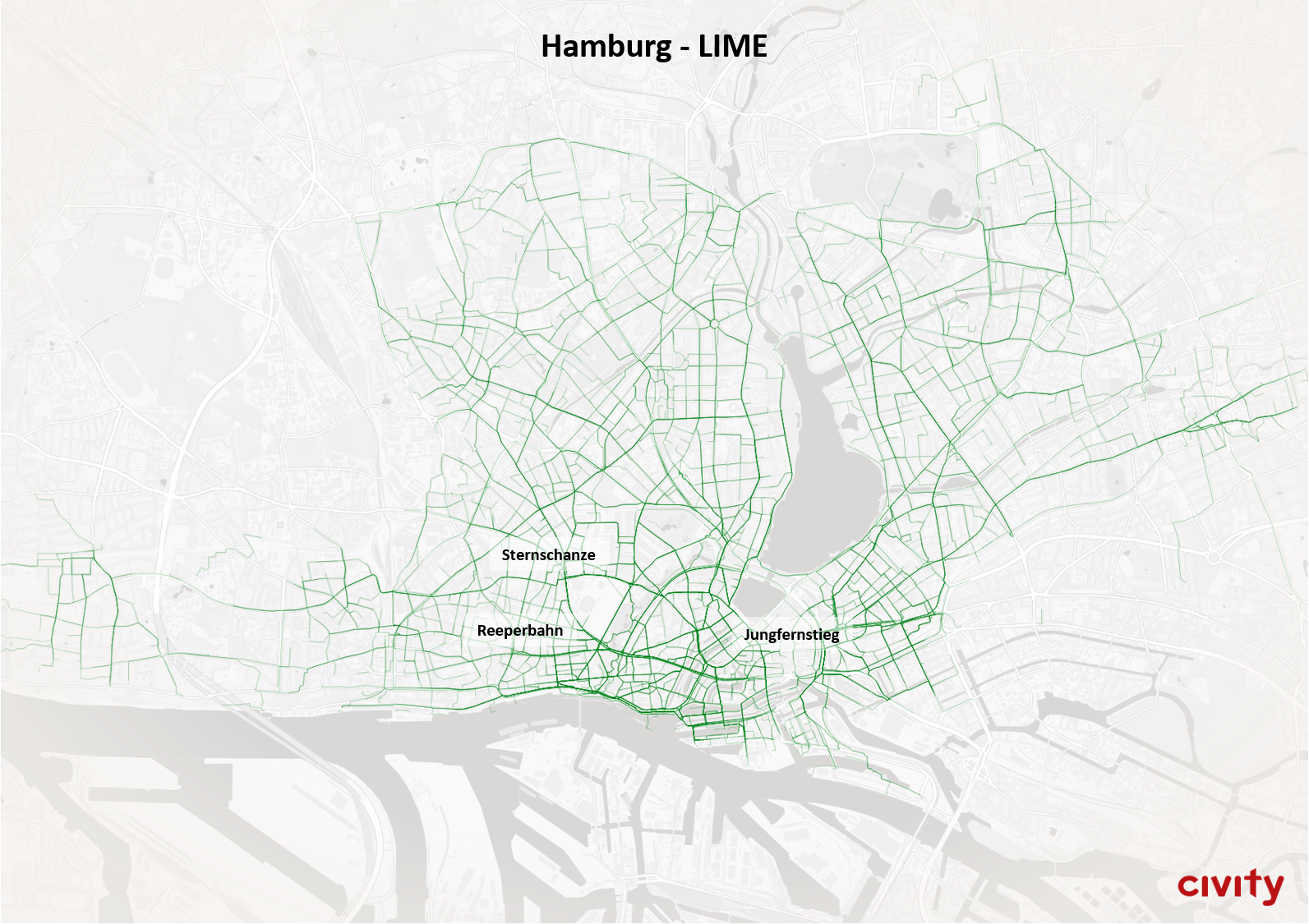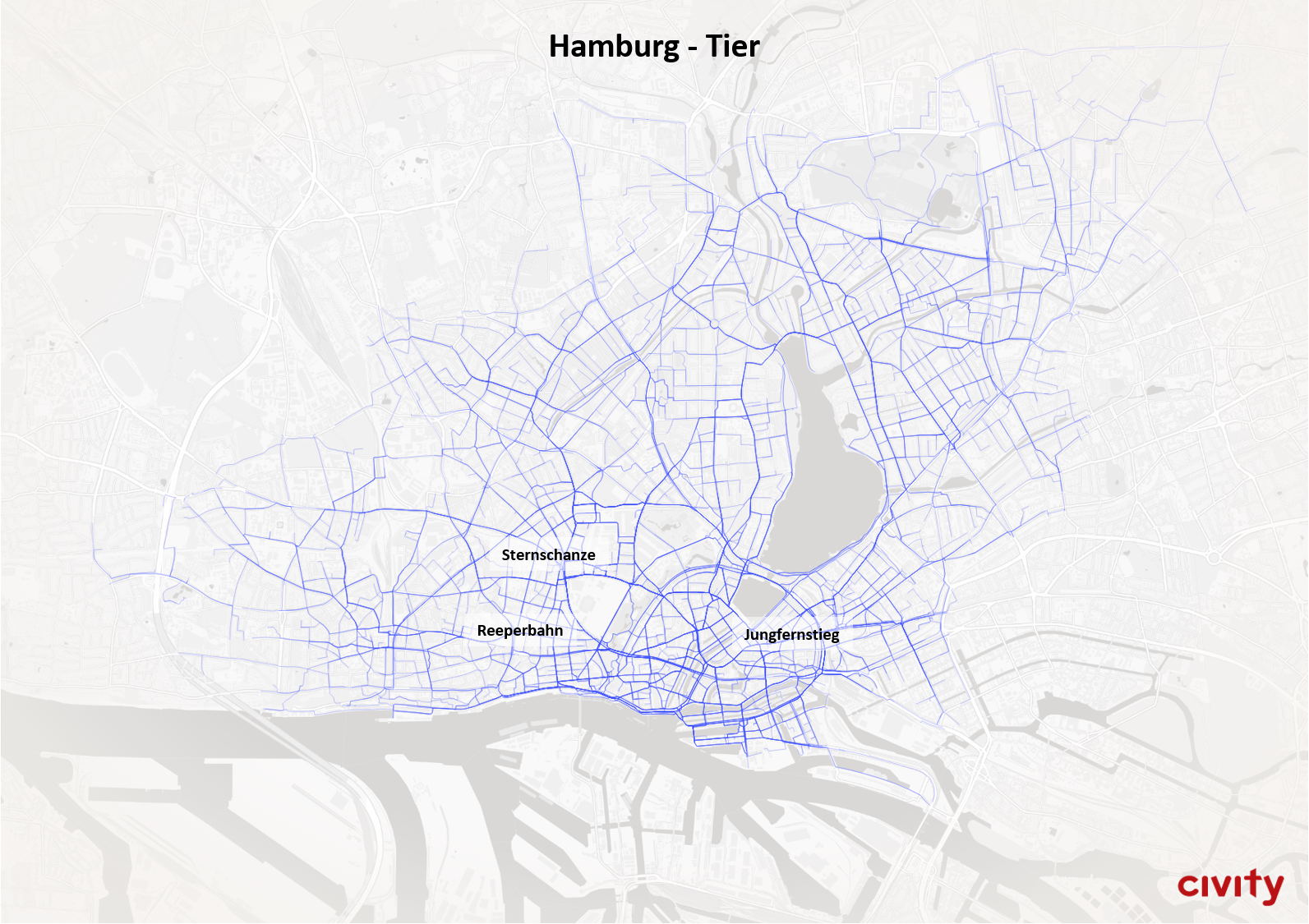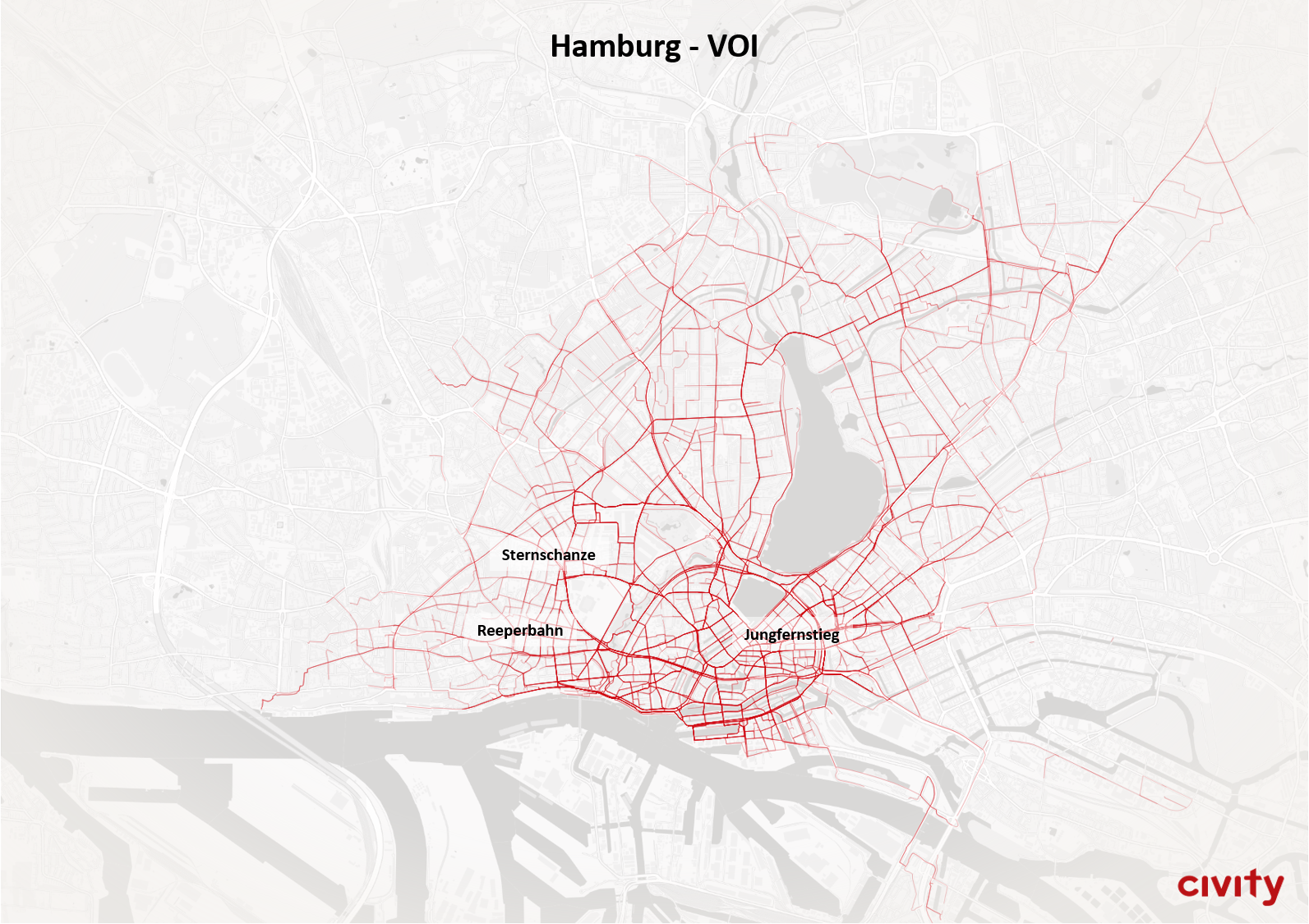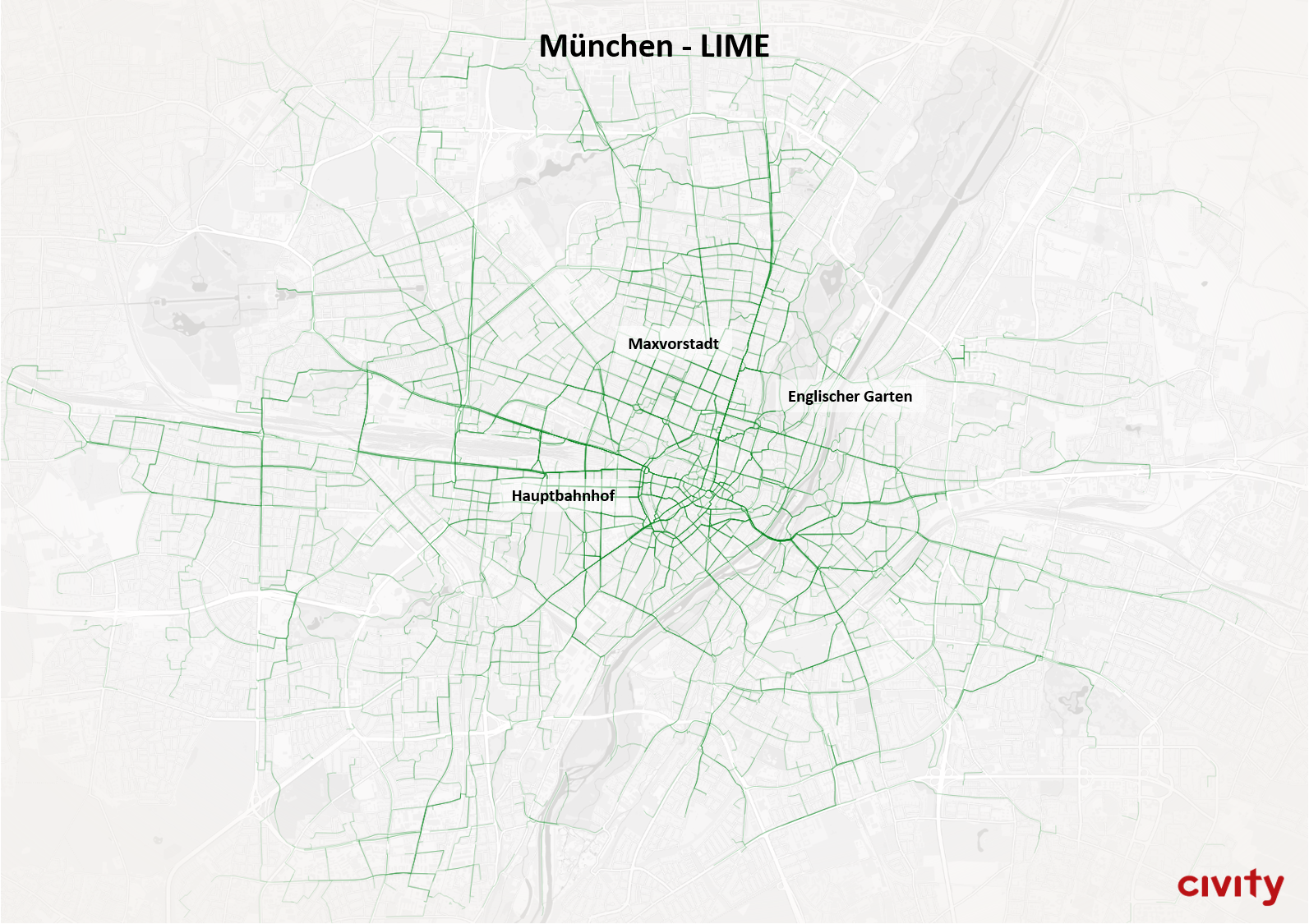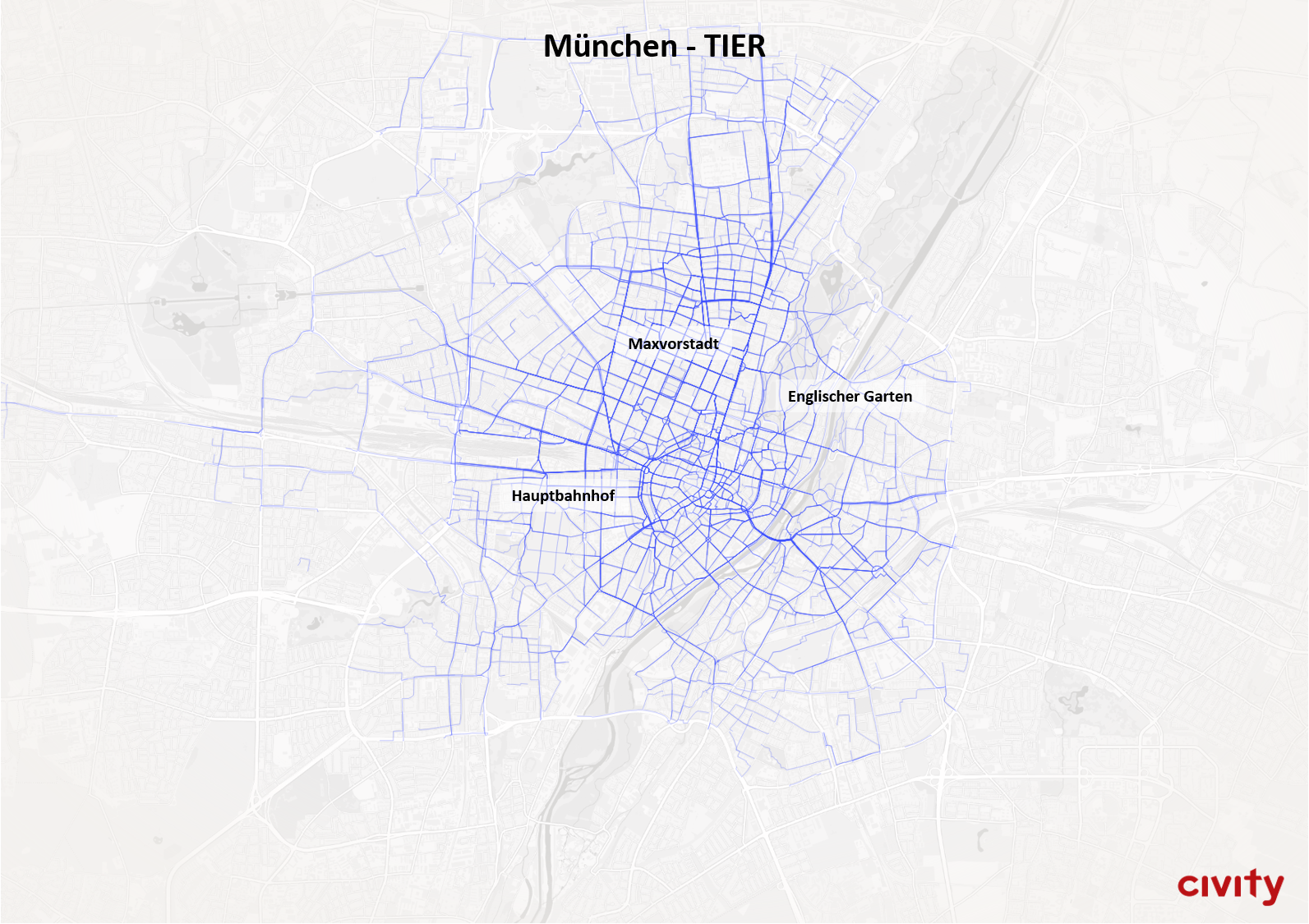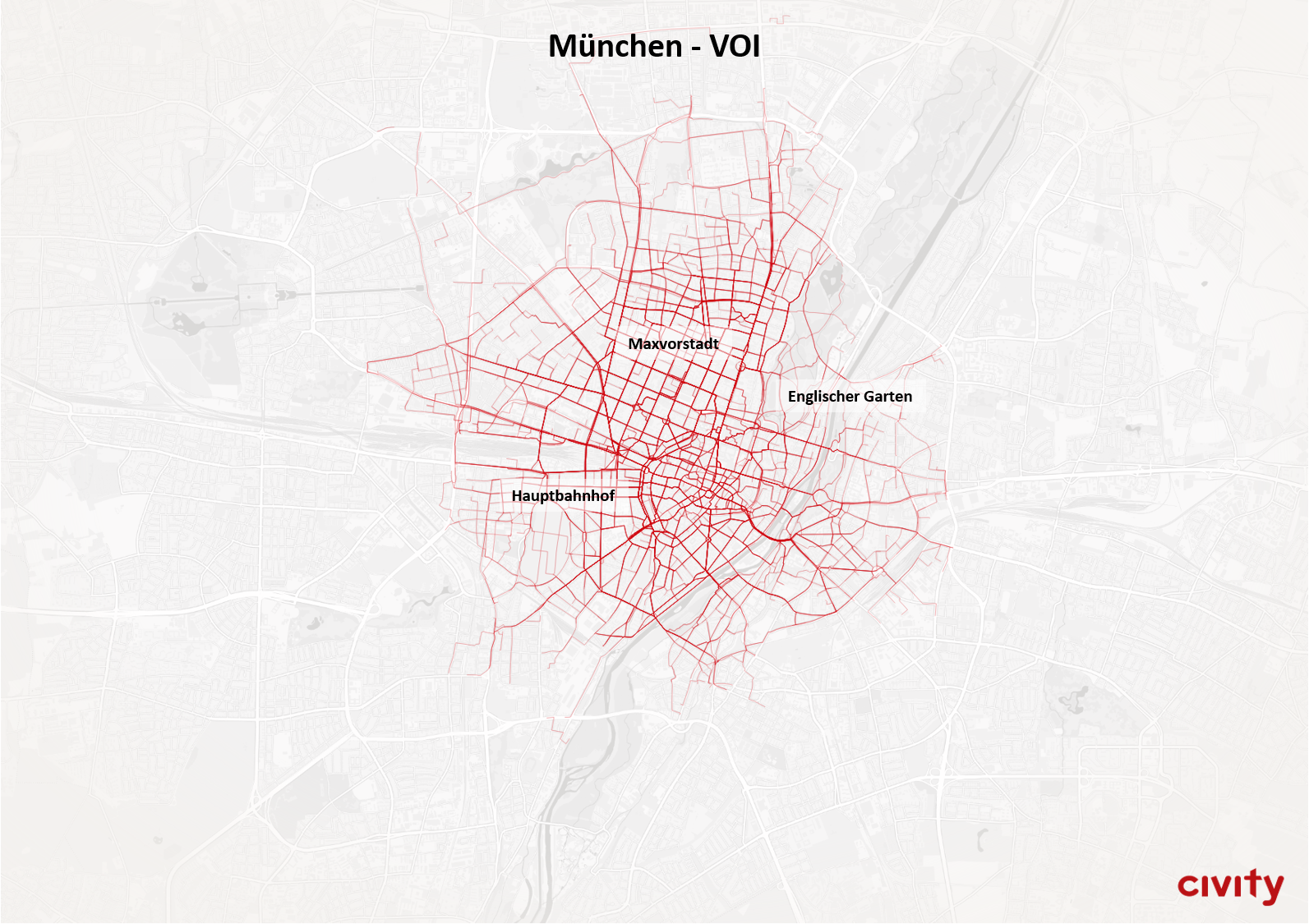The e-scooters have arrived
Since summer 2019, the mobility landscape in Germany has been enriched by one more mode of transport: E-scooters can now be spotted in public space. Like for their big siblings, the electric motor-scooters (inconveniently also often called ‘e-scooters‘), the disposal of the e-scooters is mainly conducted by shared mobility providers. In the run-up to the vote by the German Federal Council on 17th of May, a large number of providers announced their intention to extend their services to German cities as well. The public discussion on this topic fluctuated between "saviours of urban mobility" and "e-waste on the side-walk". After the introduction of the new vehicle class, those positions have been intensified and further polarised. We want to make a neutral and data-driven contribution to the recently controversial debate and show what potentials are inherited by these new vehicle types - and what not.
The providers
There are currently six major suppliers active in Germany, Circ, Lime, Tier, Voi, Jump and Bird, as well as a few smaller players. Many of them were already competing with each other abroad. In Berlin, for example, seven providers have now started operations. Sharing e-Scooters are now located in all major European cities except London.
E-scooters are not only available for rental in major cities: Our study shows that providers have now also included medium-sized cities with around 200,000 inhabitants or less such as Lübeck, Mainz, Erfurt or Ingolstadt in their expansion strategy.
We have compiled the providers by city on the map. However, the market is still ramping up and very dynamic, so that we may not be able to map every start directly.
E-Scooter Availability
The key figures of sharing
Fleet sizes per provider, rentals per square kilometre, journeys per day, average idle times: Shared Mobility has its own key figures. Some of the providers have provided software interfaces for data exchange in their booking systems. These can be used to query the positions of the currently available e-scooters and their charge status. By means of regular enquiries to these interfaces, we have been able to obtain a picture of the spatial and temporal availability of these providers' e-scooters. By doing so, we could evaluate data of the providers Lime, Tier, Voi and Circ for different German and also European cities. Currently, Circ data is only available for non-german cities.
Number of e-scooters per city and provider
The suppliers' strategic implementation planning begins with the design of the service areas and the definition of fleet sizes. These should be tailor-made for each city, since for free-floating sharing systems these two factors have a deci-sive influence on vehicle availability. Translated into the language of the shared mobility customer, this means: "Can I still get a scooter here?" or "How far is it to the next free vehicle?” On the other hand, these figures show whether the e-scooters are actually flooding the cities, as many fear. For us, it is important to show the number of e-scooters per provider and city. For this purpose, we have evaluated the different e-scooter identification keys between August 20th and 30th of September. Here, in almost all the cities in which the company is active, Lime is ahead in numbers.
The ramp-up of the systems
A simultaneous launch of similar products from different competitors in a promising market environment - for transport economists a more exciting situation than a Soccer World Cup. In fact, in a market in which traditional usage data (individual mobility patters) are only sparsely available (traffic surveys), the demand indicators obtainable for e-scooter sharing are still a real peculiarity. For the mobility market, a complete observation of a market diffusion process was unthinkable 15 years ago. The next chart shows the number of e-scooters (as defined by unique IDs) sighted for the entire German market over time, when diffusion began with the award of the municipal licences from 19th of June onwards.
Usage
Hotspots & business areas
The e-scooters are marketed as a contributing solution to inner-city mobility problems or as a last mile offer in peripheral locations. It was therefore in our interest to see exactly where the e-scooters are moving within the cities. In combination with the idle time, the movements show how concentrated the e-scooter demand is in certain parts of the city. Based on a sample of our data, we have created possible routes between rental and return locations of the e-scooters for different cities. It can be seen for Berlin that demand is particularly high in the City East. Our assumption is that this is due to early adaptation by tourists who may already know the offer from abroad. A good indication of this is the high density of demand in the Friedrichstrasse and Unter den Linden - areas in which tourism is also very high. A last mile use in residential areas can only be read from the data to a limited extent.
Movements per day and e-scooter
Not only the number of e-scooter is interesting, even more so is the question, how frequently these are moved. What is important here is that movements are visible to us, but not whether this movement was carried out by users or the service personnel of the providers themselves. Due to inaccuracies in the data acquisition and the GPS systems installed in the e-scooters, the movements per e-scooter should be taken with a grain of salt, but nevertheless provide a good approximation for use. Our survey shows that the occupancy rates of the individual vehicles in the cities surveyed vary widely. A small number of movements per e-scooter can be due to the fact that the offer is not well received or that the market is already saturated and demand is spread over too many e-scooters. In this evaluation, too, it should be noted that Circ data is not available for German cities.
The race for users
During the first weeks and months, there was a phase of trying out the new transport offer. The media attention was and is high, the weather mostly good and therefore we saw a strong increase in the usage levels. It is still unclear which cities will prove lucrative for the providers in the long term. A first hint is given by the following two graphics, in which we have plotted the number of movements per e-scooter and city against the number of e-scooters per city. The data indicate that there is a saturation effect in the utilization of the e-scooters. In Berlin, the market already seems to be saturated; despite a large supply of vehicles, the average movements per E-scooter are comparatively low. It should be noted that Circ does not provide data for German cities.
Average distances
Comfort mobility, a supplement to public transport or an alternative to the car? To answer this question, distances covered by the e-scooters can give valuable indications. We evaluated the start and end points of the e-scooter movements and routed them via a path network in order to compare the driving distances with the distances covered by other modes of transport. It can be clearly seen, that the new mode services a distance ranging between that of walking and that of biking.
Usage at the rhythm of the city
A central question for the categorization of e-scooters is the nature of their usage. Touristic and leisure mobility? Convenience mobility? Or a real addition to the public transport services? It is probably still too early to make a final statement here. However, a hint can be provided by the temporal distribution of the movements. From the data available to us, we have generated a daily graph of the movements of the e-scooters for the weeks from September 9 to September 22 for the city of Hamburg. A clear peak in usage is visible at the weekend and in the later hours of the day. This indicates a recreational and tourist usage. Especially striking are the days from September 13 to September 15 when the Cruise Days took place in Hamburg.
No range anxiety
The batteries of the e-scooters must be charged regularly. How this is done depends not only on the operating concept of the provider, but also on the behaviour of the so-called "hunters". By incentives of the providers, such as free minutes, these workers are supposed to find and load empty e-scooters. In any case, the curves show that the average charging level is considerably higher in the morning than in the evening. Those who suffer from range anxiety would therefore prefer to rent in the morning. Generally, it can be concluded from the average charging levels in the evenings that the charging management of the e-scooters is largely appropriate for their usage.
Now what?
A hype without consequences?
What conclusions can be drawn from the data on the first months of the e-scooters in Germany? Which prophecies have come true and which must be proven wrong over the course of time? We have put together some theses that we would like to discuss.
E-scooters are a hype
Okay, you don't have to be a prophet to make that statement. What we currently see in our data is a usage rate of up to 5 movements per day and e-scooter in certain cities. Such values were also reached, for example, in the early phase of e-scooter sharing, such as Coup or Emmy. Here the overall media presence as well as the attention in the ministries and municipalities seem to be somewhat inflated. It turns out that Germans still have to practice a more relaxed approach to mobility innovations.
Hardly any impact on local transport
The trip distances determined by us are in direct competition with bicycles and pedestrian traffic and at the same time trips take place primarily in inner cities that are well served by public transport. Substitution of public transport trips is possible, but the total volume is negligible. For the intermodal public transport user, new alternatives are available, so that the overall offer of urban mobility beyond the private car could become more attractive. From our point of view, there are neither major advantages nor a serious danger for public transport - at most the tourist segway rental companies may be disrupted.
Rapid consolidation of the provider landscape
It is still a little early to make reliable statements about demand and thus the long-term existence of the systems. In addition, Uber Jump has just entered the German market. Nevertheless, the market for rental systems is likely to consolidate within a year, similar to the 2017 bike sharing boom. Providers will limit their business areas to the lucrative inner-city areas, unless smart municipalities find a suitable form of regulation.
We do not expect piles of e-scooters
The suppliers and also the cities are warned after the experiences in other countries as well as by the bikesharing glut. Scenes such as those in the USA or China with piles of discarded sharing bikes will be sporadic (and the media will be all overt it), but this time the providers and local authorities are countering accordingly. For example, e-scooter providers focus much more on customer education right from the start.
What we recommend
Cities
Cities should continue to actively approach e-scooter providers. Experience from bike sharing has shown that there are effective instruments for dealing with shared mobility providers. Unfortunately, this applies more to other European countries than to Germany. Here in Germany, for example, the rededication of public car parking spaces is not possible without further ado. Cities must position themselves more clearly in this context.
Transport companies
We recommend that transport companies wait for the consolidation phase after market entry before making any fundamental decisions on the issue. During this period, transport companies should concentrate on the core business of public transport operations and, for example, provisionally address parking at intermodal hubs. Customer communication, temporary signs and sensitisation of service personnel could be sufficient.
Providers
The providers who are now entering the market will, of course, hit the power pedal hard. Nevertheless, we would recommend optimising business areas from the start. Trial and error strategies have proven to be very expensive.
Investors
Not every hype has to be picked up. But anyone who wants to get involved with a micromobility provider should observe the existing supply market closely and carry out realistic market potential analyses that look beyond the typical early adopters. In addition, the respective motivation of the players must be taken into account: Would I like to supplement my mobility platform? Do I want a sustainable business model? Do I plan a data-based product for third parties? Or am I simply looking for a financially strong investor?
Let’s discuss e-scooters!
What conclusions can be drawn from the data on the first months of the e-scooters in Germany? Which prophecies have come true and which provider is ahead in the race for the customers' favour? We have put forward some theses that we would like to discuss.
send us an e-mailContact
FAQ
Where does the data come from?
The providers examined have interfaces (APIs) through which we have regularly queried the positions of the e-scooters per city. Movements per e-scooter were then determined from the position data.
How accurate is the analysis?
We are very sure not to have recorded every movement of an e-scooter. Uncertainties arise e.g. about the GPS positioning of the e-scooters and the query interval. However, the key findings of the analyses and the comparison between cities should be correct.
Why don't we show all providers?
Not all providers offer open data or interfaces for data retrieval. This is a pity, because analyses such as these provide only a small insight into the market, which helps local authorities and transport companies.
In which areas are we uncertain?
Not every movement of a e-scooter is a paid journey. It can also be a disposition movement. Therefore, the number of the movements can predict an provider’s business success with some reservations only.
